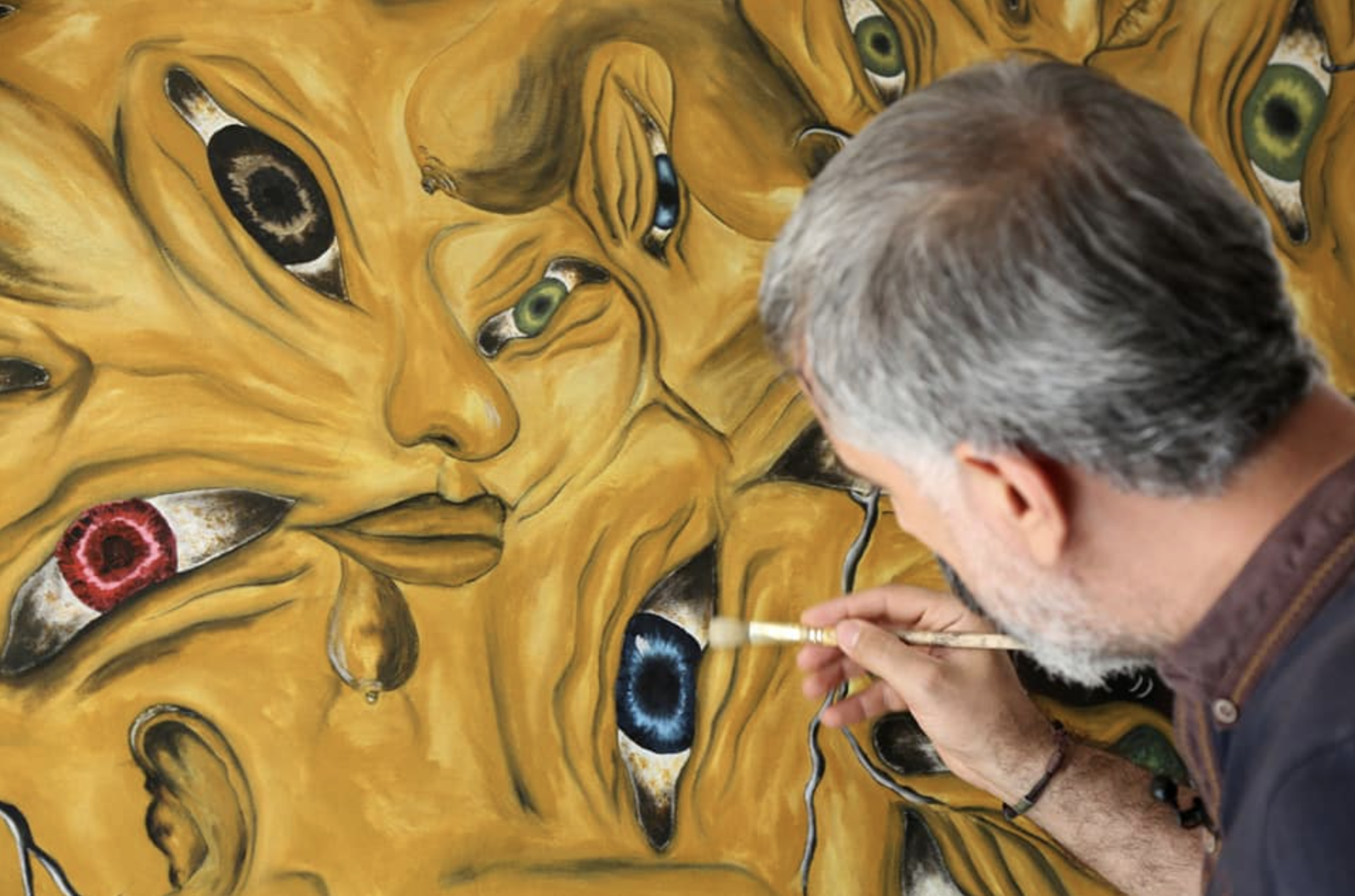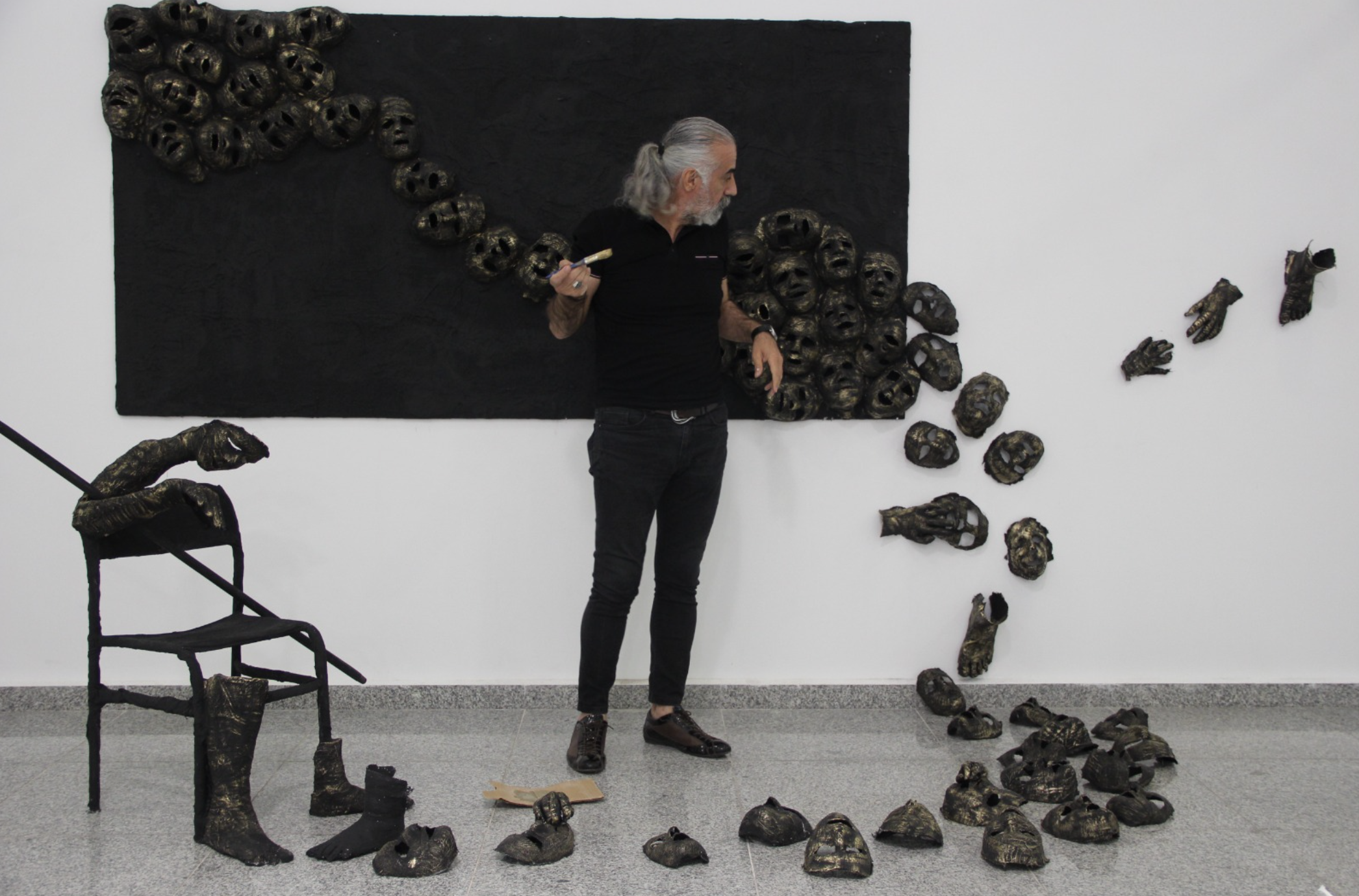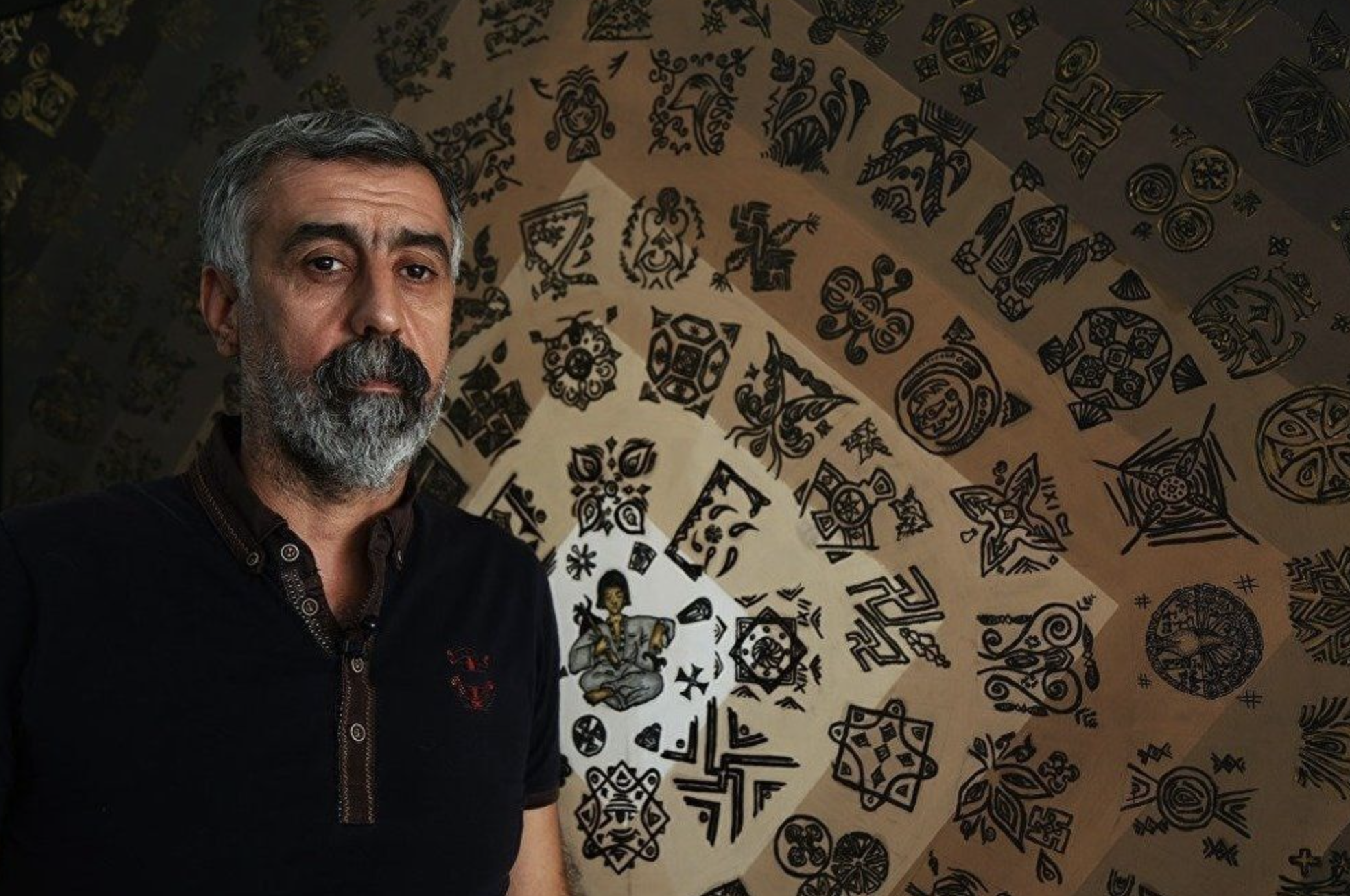Ahmet Cakmak (AC): At what age did you first encounter painting and sculpture, the cornerstones of fine arts? What were your feelings?
Gokhan Aslan (GA): Reflecting on my artistic journey, I would say that my initial encounters with painting and sculpture began in early childhood. However, it was during my middle school years that I truly started to explore my creative instincts. The drawings I created caught the attention of my art teacher, who recognized their potential and decided to showcase them in the teachers’ lounge. This moment was pivotal; it marked a significant turning point in my life.
Although I was too young at the time to fully comprehend the depth of what art meant, this experience ignited something within me. Describing the emotions I felt on that day is challenging; they are complex and layered. Even now, those memories evoke a profound sense of nostalgia and excitement that is difficult to articulate. The impact of that moment still resonates within me.

AC: Have you had experiences that drew you to the world of colors and left a lasting impression?
GA: My relationship with color has been a constant thread throughout my life, though it began somewhat unexpectedly. Growing up in Diyarbakir during the 1990s, I navigated my daily existence much like anyone else in the city. It was during this time when a friend of mine stumbled upon some of my drawings and encouraged me to consider pursuing a formal education in art. Taking my friend’s advice to heart, I embarked on preparations for this new path. That very year, I successfully gained admission to the Faculty of Fine Arts at Gazi University in Ankara. This marked the beginning of what I now refer to as my painting adventure – a journey that would immerse me in the vibrant and dynamic Ankara art scene. Throughout this experience, I encountered numerous artists and their remarkable works, each leaving an indelible impression on my creative psyche.

AC: In your body of work, while you create non-figurative pieces that are rich in symbolism, the majority of your paintings focus on faces and geographical landscapes. Is there a specific reason for this choice?
GA: My artistic practice is characterized by a dynamic interplay of brush and spatula strokes, drawing inspiration from a variety of influential movements including Cubism, Suprematism, Surrealism, and Social Realism. The city of Diyarbakir, where I reside and create, has a profound historical significance; it has been shaped by approximately 29 different civilizations throughout its history. Each of these cultures has left an indelible mark on our city’s landscape – evident in the mosques, churches, madrasas, bridges, and particularly the iconic city walls constructed from stone. The artisans of these eras have also contributed to this rich tapestry by inscribing symbols and icons into the stones using engraving techniques that can be described as ornamental. My intention is to breathe new life into these ancient reliefs through my canvases.
Therefore, my works are not solely meant to be non-figurative – they are subject to periodic transformations that reflect both my artistic evolution and the historical narratives embedded within Diyarbakir itself.

AC: As an artist, do you create your paintings and sculptures with a specific purpose in mind? Reflecting on your current position, how close do you feel to achieving your artistic goals?
GA: You can consider my works as a way of life, rather than a means to a specific end, and this is how I approach my creative process. As you know, our region is constantly facing challenges. Naturally, this compels us to create ever-evolving works. My art is primarily based on interpretation, often reflecting oppression, Kurdish issues, and the expressions or experiences of the Kurdish people, which come to life in my paintings and sculptures.
Sometimes, your thoughts may not reach the places you intend, but with hope and effort, they eventually take shape. You always have goals – short-term, medium-term, and long-term aspirations. Some of my most important goals for the upcoming period include participating in prestigious events such as Art Basel or the Venice Biennale, and bringing Kurdish art to these international platforms.

AC: You have showcased your artwork in various cities across Turkiye and participated in numerous group exhibitions and touring exhibitions. How do you perceive the relationship between your own creations and the works of other artists you admire?
GA: I have had the privilege of participating in both solo and group exhibitions throughout Turkiye and Europe, totaling 25 exhibitions, with seven being solo shows. However, my journey as an artist is ongoing; I am constantly seeking to learn and grow. I hold immense respect for the talented artists that Turkiye and the world have produced. My inspiration comes from great artists like Pablo Picasso, Rembrandt, Van Gogh, Nuri Iyem, and Abidin Dino. While I do not see myself on their level, their work profoundly influences me. The art I encounter in European museums leaves a lasting impression on me.
In today’s modern landscape, art is evolving rapidly, embracing contemporary, conceptual, and digital forms. Therefore, making direct comparisons between my work and that of others feels inappropriate to me.

AC: In your view, how does Kurdish painting and sculpture fit into the global art scene? Can we discuss the broader context of Kurdish art, particularly in relation to our geographical influences? Are there notable Kurdish artists who have gained recognition beyond their own borders?
GA: The status of painting and sculpture globally varies significantly, and it is essential to recognize this distinction. The Renaissance created a considerable gap between our artistic expressions and those of Western countries. For instance, while some figurative art has emerged in the last century, it is important to note that prior to that, there was a scarcity of artistic output. This can largely be attributed to Islamic cultural influences, which favored geometric patterns, miniatures, and ornamental designs over figurative painting and sculpture. I perceive art as a ritualistic practice, and I strive to incorporate local elements into my works.

I consider myself a “glocal” artist, as I believe that art draws from local influences to achieve universal resonance. Unfortunately, the Kurdish community has produced only a handful of notable artists over the past century, which I attribute to external objective conditions beyond our control.
Life resembles an ant’s relentless journey – constantly moving, working, and striving to build something meaningful. It requires immense effort, labor, patience, and persistence to elevate Kurdish art onto the world stage.

Before closing, I would like to express my gratitude to Ahmet Cakmak and Kurdistan Chronicle for this enlightening conversation.